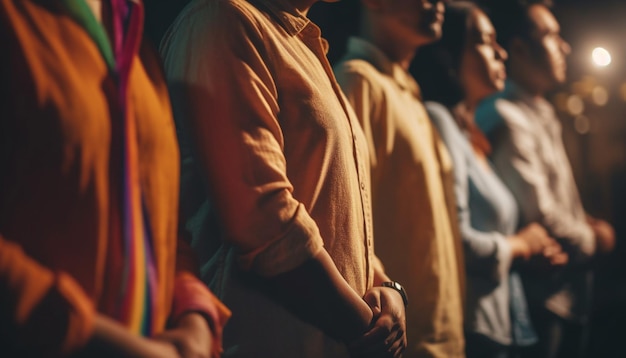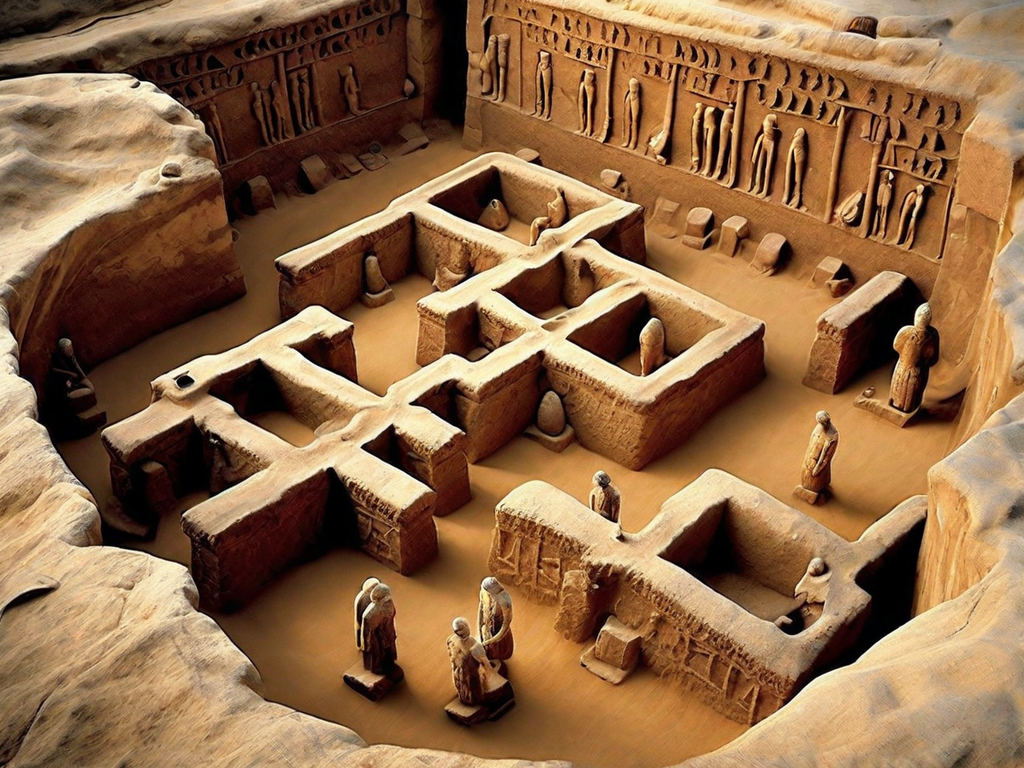From ancient civilizations to modern societies, the global influence of strange phenomena is evident in the shared superstitions that have transcended geographical boundaries. We will unravel the common beliefs and practices that have emerged from these global superstitions, exploring their impact on human behavior and cultural traditions.
Moreover, we will examine the role of media and technology in spreading these superstitions, and how they have amplified their reach in the modern era. The advent of the internet, social media platforms, and popular culture has provided unprecedented opportunities for the dissemination and evolution of superstitious beliefs associated with strange phenomena.
Finally, we will delve into the enduring legacy of strange phenomena in folklore and its influence on art, literature, and societal customs. These phenomena continue to inspire creativity and shape cultural narratives, reflecting the timeless fascination humans have with the mysteries of the world.
Join us on this captivating journey as we unravel the intriguing world of strange phenomena and discover the intriguing ways they have shaped global superstitions and cultural practices.

The Fascination with Strange Natural Phenomena
Throughout history, humans have been captivated by the allure of strange natural phenomena. From unexplained lights in the sky to perplexing geological formations, these occurrences have sparked curiosity and wonder in people all over the world. Our fascination with these phenomena stems from our innate desire to understand the mysteries of the natural world and find meaning in the inexplicable.
One example of a strange natural phenomenon that has fascinated humanity for centuries is the Northern Lights, also known as the Aurora Borealis. These breathtaking displays of colorful lights dancing across the night sky have inspired countless stories, myths, and legends. The shimmering curtains of green, purple, and red create a mystical ambiance that leaves observers in awe of the wonders of the universe.
Another phenomenon that has intrigued people for generations is the formation of crop circles. These intricate patterns that appear overnight in fields have given rise to countless theories and speculations. While some crop circles are believed to be the result of natural phenomena, such as wind patterns or geological activity, others remain unexplained, fueling debate and intrigue among researchers and enthusiasts.
“The study of strange natural phenomena provides us with opportunities to challenge our current understanding of the world and expand our knowledge. It allows us to question what we think we know and uncover new possibilities.”
One of the most famous examples of a strange natural phenomenon that has captured public attention is the Bermuda Triangle. This loosely defined area in the western part of the North Atlantic Ocean is notorious for the mysterious disappearances of numerous ships and aircraft. Despite extensive research and investigations, the incidents within the Bermuda Triangle remain unsolved, adding to its enigmatic reputation.
Strange geological formations also hold a special fascination for people. The Giant’s Causeway in Northern Ireland, with its hexagonal basalt columns, has inspired various legends and tales of giants and ancient battles. The unusual symmetry and natural beauty of this site make it a popular tourist attraction and a testament to the wonders of the Earth’s geological processes.
By exploring and studying these strange natural phenomena, we gain insights into the vast complexity of our world. They remind us that there are still mysteries waiting to be unraveled and phenomena yet to be understood. As we continue to uncover the wonders of the natural world, we deepen our appreciation for its beauty, diversity, and the profound impact it has on shaping our cultures and beliefs.

The Fascination with Strange Natural Phenomena
| Strange Natural Phenomena | Description |
|---|---|
| Northern Lights (Aurora Borealis) | A colorful light display in the night sky caused by solar particles colliding with Earth’s atmosphere. |
| Crop Circles | Intricate patterns that appear overnight in fields, often attributed to unknown origins or extraterrestrial activity. |
| Bermuda Triangle | An area in the western North Atlantic Ocean associated with the unexplained disappearances of ships and aircraft. |
| Giant’s Causeway | A natural formation in Northern Ireland consisting of hexagonal basalt columns formed by volcanic activity. |
Supernatural Explanations: How Strange Phenomena Foster Superstitions
In our continued exploration of strange phenomena, we now turn our attention to the supernatural explanations that often accompany these unexplained occurrences. It is fascinating to observe how these mysterious events become catalysts for the formation of superstitious beliefs across cultures and societies.
When faced with the unknown, humans have an innate desire to seek answers and explanations. Strange phenomena, such as inexplicable lights in the sky or eerie sounds echoing through the night, stir up curiosity and ignite the imagination. People yearn to make sense of these occurrences and derive meaning from them.
Supernatural explanations emerge as individuals grapple with the inexplicable. They turn to age-old beliefs, mythologies, and cultural folklore to find solace amidst the uncertainty. These explanations often attribute the strange phenomena to otherworldly forces, spirits, or divine intervention.
“It is said that when the moon is shrouded in a blood-red hue, the boundary between our world and the spirit realm grows thin,” shares renowned folklore expert Dr. Elizabeth Jensen. “During such celestial events, people report witnessing strange phenomena, leading to a deepening of existing superstitions and the birth of new ones.”
As superstitions take root, they generate coping mechanisms and rituals designed to protect individuals from harm or to harness the powers believed to be associated with these phenomena. Countless traditions, from wearing lucky charms to performing specific rituals on certain days, have developed as a result of these supernatural beliefs.

The Ouija Board Phenomenon
One example of how strange phenomena foster superstitions can be seen in the enduring popularity of the Ouija board. This mysterious device, with its origins rooted in the late 19th century spiritualist movement, is believed by many to hold the power to communicate with the spirits of the deceased.
The Ouija board’s consistent association with unexplained phenomena, such as it seemingly moving on its own or providing eerily accurate answers, has contributed to its reputation as a portal to the supernatural. Despite scientific skepticism, the allure of the Ouija board persists, captivating believers and skeptics alike.
Through careful examination of the supernatural explanations linked to strange phenomena, we can gain deeper insights into the origins and development of global superstitions. By understanding the roots of these beliefs, we can appreciate the profound impact that strange phenomena continue to have on shaping our cultures and societies.
| Superstition | Country/Region | Explanation |
|---|---|---|
| Walking under a ladder | United States | Believed to bring bad luck, based on the belief that walking under a ladder disrupts the Holy Trinity |
| Breaking a mirror | Greece | Thought to bring seven years of bad luck, contemplating one’s own soul in confusion and agony |
| Black cats | Various cultures worldwide | Considered to be either a symbol of good or bad luck, often influenced by local folklore and ancient mythologies |
| Friday the 13th | Western cultures | Fears of this day stem from associations with the crucifixion of Jesus Christ, as it is believed to be the day he was crucified |
Cultural Perceptions of Strange Phenomena
Strange phenomena have a fascinating way of captivating societies worldwide, but their interpretation and perception vary greatly based on cultural backgrounds and beliefs. Different cultures have their unique lens through which they view and make sense of these unusual occurrences. By examining the cultural perceptions of strange phenomena, we can gain valuable insights into the diverse world of global superstitions and their profound influence on various communities.
One of the most striking aspects of cultural perceptions is how they shape the understanding and interpretation of strange phenomena. While some societies may perceive certain occurrences as divine or spiritual messages, others may see them as signs of impending doom or bad luck. For example, the appearance of a comet in the sky may be seen as a celestial omen in one culture, while in another culture, it might be perceived as a signal for imminent disaster.
The Role of Cultural Backgrounds
Our cultural backgrounds and beliefs profoundly influence the way we perceive and respond to strange phenomena. Cultural traditions, historical events, and religious beliefs create a framework for interpreting the unexplained. For instance, in Western cultures, the concept of Friday the 13th being an unlucky day stems from the Christian belief that 13 people were present at the Last Supper, with the 13th being Judas, who betrayed Jesus. This association has become deeply ingrained in Western superstitions, leading to avoidance of certain activities or decisions on this particular day.
Similarly, the perception of celestial events such as solar or lunar eclipses vary across cultures. Some cultures view these astronomical occurrences as a time of heightened spiritual energy or a significant transition between life and death. In contrast, others may consider them to be negative omens or a sign of impending disaster.

The Influence of Cultural Beliefs
Cultural beliefs play a vital role in interpreting strange phenomena and shaping the associated superstitions. For example, in many Asian cultures, the presence of orbs of light, often referred to as “will-o’-the-wisps,” is believed to be spirits guiding individuals. This perception is deeply rooted in cultural folklore and religious beliefs, cultivating a sense of reverence and respect for these ethereal entities.
“Cultural perceptions of strange phenomena have given rise to a rich tapestry of superstitions worldwide. These beliefs not only shape individual behavior but also bring communities together in shared beliefs and practices.”
Furthermore, cultural beliefs determine the rituals or precautions individuals undertake to protect themselves or harness the power of strange phenomena. These can include wearing specific colors, performing rituals, or avoiding certain behaviors. By adhering to these cultural practices, individuals believe they can navigate the potentially mystical or dangerous elements associated with strange phenomena.
A Cross-Cultural Comparison
| Culture | Strange Phenomena | Perception |
|---|---|---|
| Eastern cultures (China, Japan, Korea) | Comets | Associated with significant events, such as the birth or death of an emperor |
| Western cultures | Black cats | Considered a symbol of bad luck, especially if they cross one’s path |
| African cultures | Solar eclipses | Seen as a fight between the Sun and the Moon or as the temporary loss of a revered celestial being |
| South American cultures | Thunderstorms | Believed to be the expression of an angry god or spirit |
As the table shows, cultural perceptions of strange phenomena differ significantly across various regions of the world. This cross-cultural comparison highlights how societal interpretations and beliefs can shape superstitions associated with specific phenomena.
Understanding the role of cultural perceptions within the context of strange phenomena is crucial for comprehending the complex web of global superstitions. The diversity of beliefs and practices across cultures reminds us of the rich tapestry of human experiences and the enduring legacy of strange phenomena in shaping our world.
Global Superstitions: Common Beliefs and Practices
In this section, we will delve into the intriguing world of global superstitions and explore the common beliefs and practices that arise from them. Superstitions have been a part of human culture for centuries, shaping our behaviors, decisions, and perceptions.
Strange phenomena often play a significant role in the development of these superstitions. They capture our attention, spark curiosity, and evoke fear or awe. From black cats crossing our paths to the dread associated with Friday the 13th, these strange occurrences have embedded themselves deeply into our collective consciousness.
Let’s take a closer look at some prominent global superstitions:
- Walking under a ladder: This belief stems from the idea that walking under a ladder brings bad luck. It originated from ancient Egyptian and Christian traditions, where a ladder leaning against a wall formed a triangle, symbolizing the Holy Trinity. Disturbing this sacred shape was considered blasphemous and believed to attract misfortune.
- Breaking a mirror: The belief that breaking a mirror brings seven years of bad luck has its roots in ancient Roman and Greek cultures. Mirrors were believed to have the ability to capture and reflect a person’s soul, so breaking one was seen as damaging one’s soul and inviting misfortune into their lives.
- Opening an umbrella indoors: Many cultures believe that opening an umbrella indoors brings bad luck. This superstition can be traced back to early Egyptians who used umbrellas to protect themselves from the scorching sun. Opening them indoors was seen as an insult to the sun god and attracted his wrath.
These are just a few examples of the countless superstitions that exist worldwide. They vary from culture to culture, but they all share a common thread – the belief that certain actions or objects carry specific consequences, either positive or negative.
Superstitions continue to permeate our daily lives, influencing our decisions in various aspects. They can affect our choices in relationships, careers, and even simple routines. While some may dismiss them as mere folklore, superstitions have a profound impact on the way we navigate the world.
Superstitions are remnants of our ancestors’ beliefs and experiences, passed down through generations. They have become an inseparable part of our cultural heritage, shaping our traditions and rituals.
By acknowledging and understanding these common beliefs and practices, we gain insight into the global influence of strange phenomena and the power they hold over human behavior. Whether we choose to embrace or dismiss them, superstitions continue to weave their enigmatic web in our lives.
The Role of Media and Technology in Spreading Superstitions
In today’s interconnected world, the role of media and technology cannot be underestimated when it comes to spreading superstitions associated with strange phenomena. With the advent of the internet, social media, and popular culture, these beliefs can quickly and easily reach a global audience, transcending geographical boundaries and cultural differences.
The influence of media and technology on the dissemination of superstitions is profound. Through various online platforms, individuals can share their personal experiences, beliefs, or encounters with strange phenomena. The power of storytelling and the viral nature of social media enable these narratives to spread rapidly, captivating the attention of people around the world.
“I saw a video of a strange creature lurking in the woods on social media, and now I’m scared to go outside alone,” says Sarah, a social media user. “It’s amazing how quickly these stories spread and how they can impact our everyday lives.”
Furthermore, popular culture plays a significant role in perpetuating superstitions. Movies, television shows, and books often feature strange phenomena as plot devices, reinforcing existing beliefs or creating new ones. These fictional portrayals have a profound impact on public perception and can shape the way individuals interpret and respond to strange occurrences in their own lives.
The widespread use of technology also contributes to the perpetuation of superstitions. With the increasing availability of smartphones and other digital devices, individuals have immediate access to information and an abundance of resources that can reinforce or validate their beliefs. Websites, forums, and online communities dedicated to strange phenomena provide a space for individuals to share their experiences, seek validation, or find explanations that align with their preexisting beliefs.
The amplifying role of media and technology in spreading superstitions cannot be overlooked. In the modern era, these platforms serve as conduits for the dissemination and reinforcement of beliefs associated with strange phenomena, creating a global network of shared experiences and shared superstitions.
From Folklore to Reality: The Enduring Legacy of Strange Phenomena
Strange phenomena have long captivated human imagination and become deeply ingrained in our cultural folklore. These mysterious occurrences, whether natural or supernatural, have left an enduring legacy that continues to shape our cultural narratives, traditions, and beliefs. From ancient myths to modern urban legends, strange phenomena have become an integral part of the human experience.
The influence of strange phenomena on art, literature, and societal customs cannot be underestimated. Throughout history, artists and writers have drawn inspiration from these peculiar occurrences to create captivating works that both entertain and provoke thought. From ancient cave paintings depicting supernatural beings to modern-day horror novels and films, strange phenomena have served as a wellspring of creativity and a source of fascination.
Moreover, strange phenomena have not only influenced the realm of art and literature but have also impacted everyday life. Superstitions that have arisen from these phenomena play a significant role in our day-to-day routines and decision-making processes. Whether it’s avoiding stepping on sidewalk cracks or carrying lucky charms, these superstitious beliefs are deeply rooted in the enduring legacy of strange phenomena.
As we explore the rich tapestry of global superstitions, it becomes clear that strange phenomena have transcended their initial enigmatic nature to become an integral part of our reality. By recognizing the profound impact that strange phenomena have had on our cultural heritage and societal traditions, we can gain a deeper understanding of the diverse and fascinating world of folklore.





























